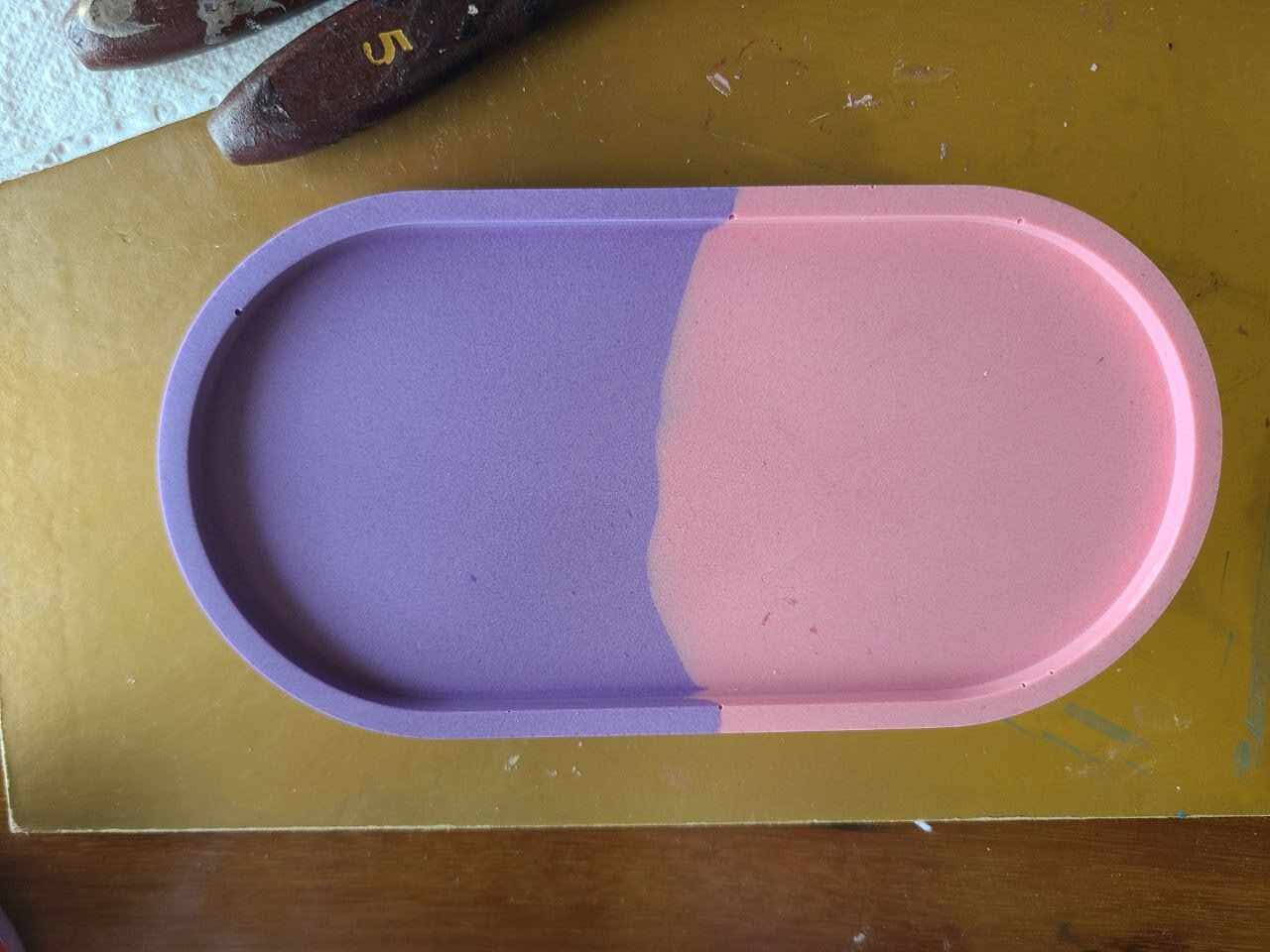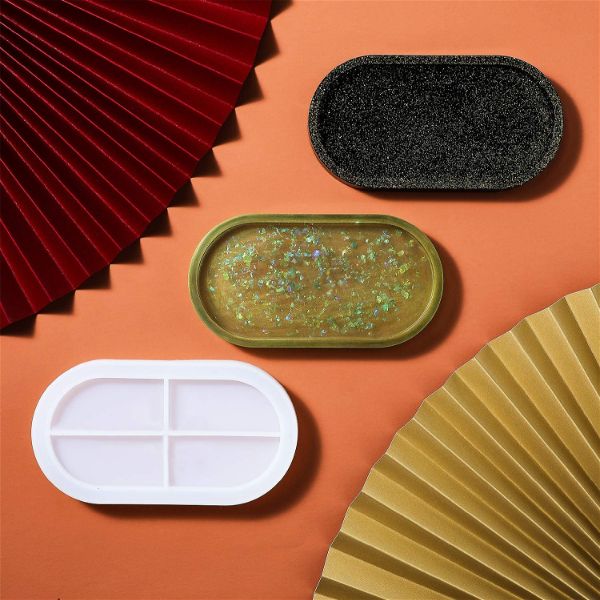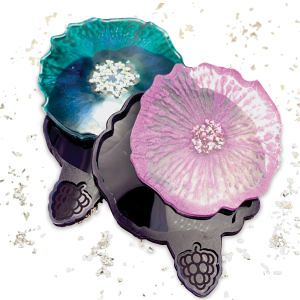Last Updated on March 12, 2024 by Masha Eretnova
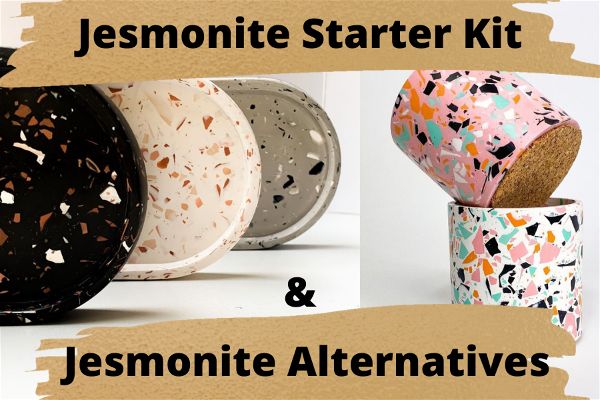
Jesmonite is an exciting new product that’s been taking the crafting world by storm! I’m fascinated by all these Instagram reels with satisfying mold pouring and absolutely beautiful candle holders, coasters, and small crafts.
But this amazing material simply is not available in USA and many other countries, so what do we do? Not to worry, there are excellent jesmonite alternatives in US and abroad that have comparable results. We are not missing out 😉
Table of Contents
This article contains affiliate links. It means no extra cost for you but a little commission (2-3%) for me to support my hobby and blog. Thank you!
What is Jesmonite exactly?
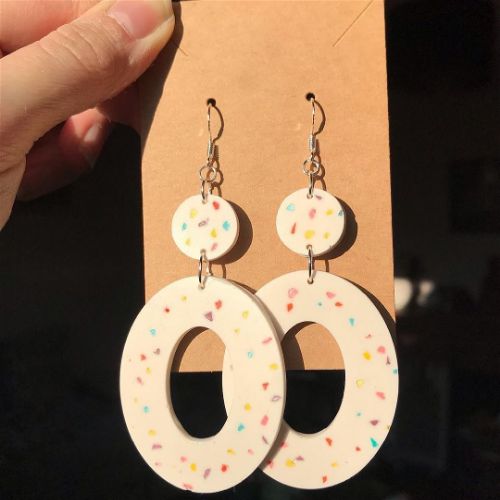
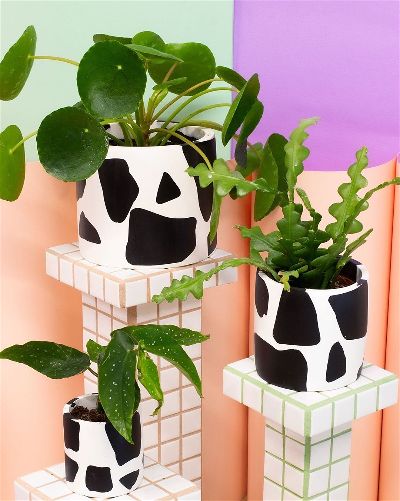
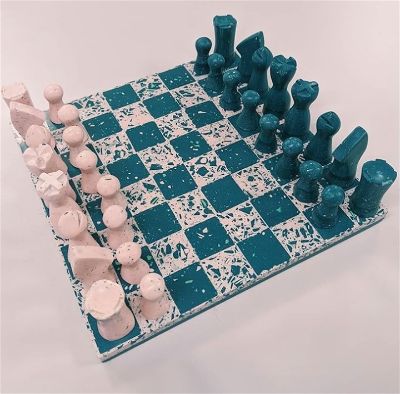
Jesmonite is a combination of polyester resin and jesmonite base (a mineral base). It is a so-called composite material.
Jesmonite resin isn’t as strong as traditional polyester resin so jesmonite pieces are lighter and more delicate than jesmonite made with resin.
Jesmonite was invented in 1984 in the United Kingdom by Peter Hawkins – Technical and Development Director of the Jesmonite company. In 2017 Jesmonite was officially named “Material of the Year” by the London Design Fair.
All of these beauties above are made from Jesmonite and are featured on the Jesmonite brand’s official Instagram account.
What are the advantages of Jesmonite?
- versatile: can be used for crafts, sculptures, molding, but also as a painting surface and jewelry!
- a natural-looking alternative to plastic
- a lightweight alternative to concrete
- eco-friendly safe alternative to resin, plaster, or concrete. Solvent-free and contains no VOCs
- cured jesmonite can be broken down and reused as decorative fillers to create unique patterns.
- ultimate chameleon material – can mimic virtually any surface, color, or texture.
- durable: flame resistant, and resistant to impact
- safe to use, and easy to use and clean.
Best Jesmonite Alternatives
Everything would be just perfect but up until end of 2023 Jesmonite didn’t have an official distributor in the US, and you could not directly purchase it from their official website.
UPDATE: since 2023 there is an OFFICIAL Jesmonite distributor in US – this website.
On Etsy and other marketplaces, though, a standard package of AC100 will cost you around $90-$370 and not everyone is ready to invest so much in a hobby.
Jesmonite has 2 active parts: a liquid resin and a composite plaster.
If you’re looking for an alternative it can be resin with some kind of plaster (it makes the piece very durable), just resin, or regular quick-set cement mixed with water.
Here are some Jesmonite alternatives:
If I would choose one Jesmonite alternative it would be ResinCrete by JDiction!
- Plaster of Paris + water is the easiest and closest way to substitute to Jesmonite
- Eco Composite Kit – comes with different colors so you can create terrazzo too!
- Colorberry Jesmonite Casting Compound
- Special plaster’s SP201 acrylic polymer
- Tiranti’s Plaster Polymer liquid + alpha basic plaster
- Aqua Resin
- ResinCrete by JDiction
- Terra-Form by Chromatic Castle (note that shipping will be expensive it is a UK brand)
- Quick set cement, like Polycell Quick Set Cement + water (1 part water : 3 parts cement)
- USG plaster for moldmaking (USG Ultracal 30) – very cost-efficient
- Molding Powder by Casting Keepsakes
- In Canada good jesmonite alternative is a gypsum-based Matrix Dryve
- For Australia the best and closest alternative to Jesmonite is Ecrylimer – it is just the same 2-part composite material but has softer texture and less bubbles (Jesmonite does have a few but not too bad either).

Quick-set cement will be the quickest to set (around 10 min, while Jesmonite is 25 min).
Don’t be afraid of how pigment looks with wet cement – you may think that there will be no color, but just follow the instructions and wait until it’s cured.
You will see a beautiful result!
Jesmonite Compared To Similar Products
Jesmonite vs Epoxy resin
Jesmonite may be an alternative to epoxy resin projects, especially if we consider the price. However, Jesmonite is more opaque than epoxy and doesn’t have a glossy finish until you polish it.
Another difference is that epoxy is transparent, while Jesmonite has a concrete-like appearance and matte finish.
Related post: 73 Best Resin Mold Ideas + DIY Mold for Epoxy Recipe
Jesmonite vs Plaster of Paris
Plaster of Paris would be quite hard to work with for molding, it doesn’t flow like Jesmonite or cement, but still doable.
It is better to use plaster for pottery (recommended brand Perfect Plaster) – it has smaller particles and will be less chalky. It will have the same characteristics as Jesmonite.
The plaster will be also lighter than Jesmonite and you will need less Plaster to make the same amount of pieces.
Aqua Resin vs Jesmonite
Aqua resin is a popular water-based material for casting and cultures, just like Jesmonite.
They are very alike, both are composite, both have polymer compound.
However, Aqua Resin can have more plastic feel, shine to it, compared to plaster-like feeling of Jesmonite.
Aqua resin doesn’t feel chalky and dries very smooth.
Ecrylimer vs Jesmonite
Both Ecrylimer and Jesmonite are composite materials but Ecrylimer claims to be much softer and modern.
They are very similar in all characteristics – both dry fast – under an hour, have matted plaster like finish, and are easy to work with.
It seems to be true that Ecrylimer is softer once set, with Jesmonite you need to sand off some sharper edges sometimes and check for bubbles. Ecrylimer works better in this matter.
What do you need to start?
A jesmonite starter kit typically contains everything you need to start working with jesmonite, including molds of various shapes, pigments for coloring your creations, and base jesmonite resin (liquid and powder).
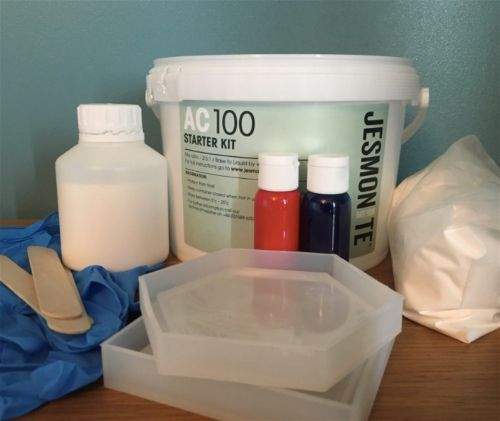
Jesmonite AC100 starter kit should include:
- AC100 liquid or any other liquid resin
- Jesmonite Base (any other mineral base)
- Pigments
- Stirring sticks
- Molds
- Nitrile gloves
- Step by step instructions
- Acrylic Sealer
If you are UK resident Jesmonite Starter Kit is available for you on Amazon. As well as all product lines.
AC100 Liquid Resin + Base
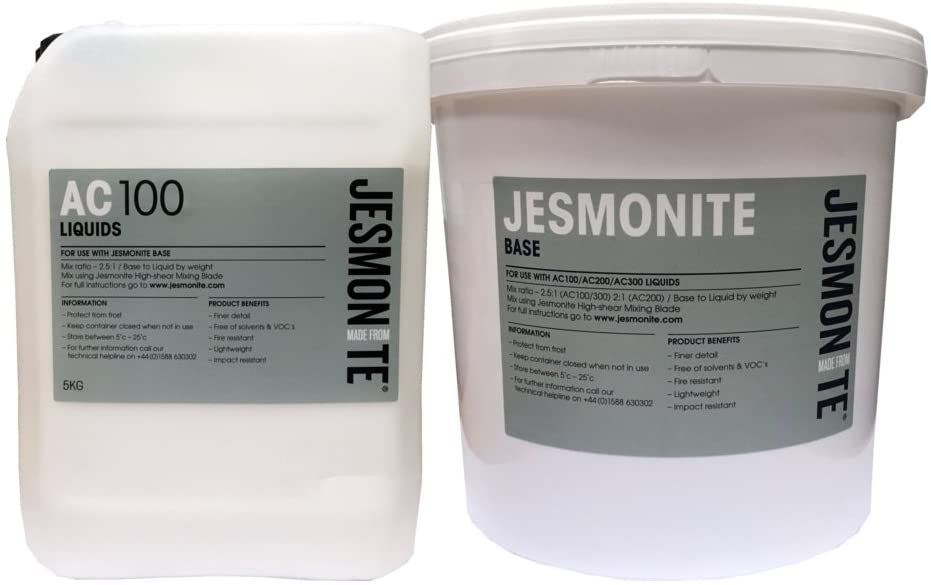
As we know now jesmonite is made of 2 parts: a resin and a mineral base. AC100 is a water-based Acrylic composite material. It is absolutely safe and eco-friendly (solvent-free, no VOC’s). Simply put AC100 is an acrylic polymer or resin.
AC100 will fit you perfectly if you’re planning to make some home decoration, art projects, and moulded projects, but also for making wall panels. It offers fire-resistant glass-reinforced mouldings.
You can always buy additional mediums with glass reinforcements, pigments, fillers, and control chemicals to use adaptable material for versatile craft ideas.
You can use AC300 instead of AC100 for cost-sensitive applications.
MIX RATIO: 2,5 parts of Jesmonite base to 1 part of AC100 Liquid.
Time for initial set: 15 – 20 minutes (18°C, No Retarder)
For UK residents: link to AC100 Liquid + powder 3,5 kg package. For US residents check the alternatives below.
Jesmonite Pigment Alternative
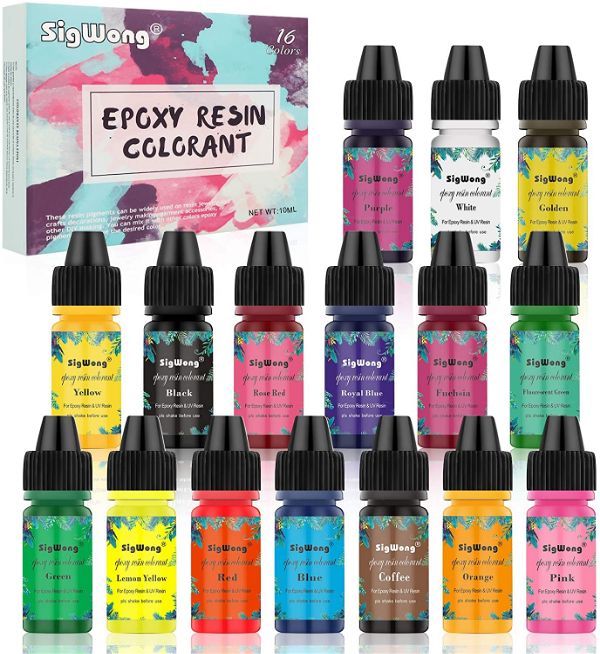
For your Jesmonite projects, you can use the same pigments as for resin art. There are a huge variety of pigments available on Amazon from 6 basic colors to gorgeous metallic or pearl pigments.
They are all sold in small bottles but don’t be discouraged, you really won’t need much. As Jesmonite official designers suggest using only 20 g of the pigment per one kilo of the jesmonite mixture. And one kile it’s a lot: it will be enough to make 7 coasters!
Mix one pigment with liquid resin if you need a dense uniform color. If you want to experiment, swirl color pigments in a premixed (liquid + powder base) mixture.
From professional brands, Aqua Resin product line has good color options – very concentrated.
Some pigment bestsellers:
Molds
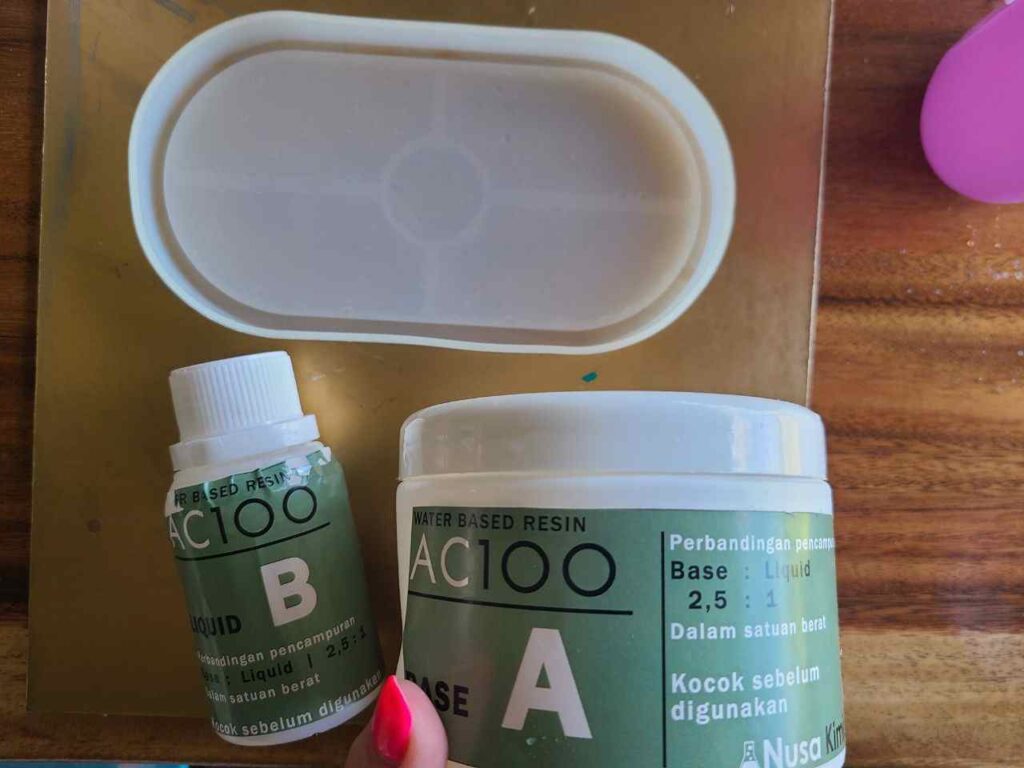
There is nothing more satisfying than pouring the mixture into a mold and then take it from it when it’s cured. The most common mold shapes are square or hexagon coasters and oval or tray molds. But you can surely find any other shapes for home decor or jewelry making.
You can search for resin molds, casting molds, or clay molds. As long as it is a silicone mold, you can use it!
For 70+ molds ideas (including jewelry and home decor) check my endless list of molds 🙂
Jesmonite Sealer Alternative
You can use a branded Jesmonite acrylic sealer, but if you are in the US, you can replace it with any clear acrylic sealer, spray or liquid OR regular beeswax.
A sealer for Jesmonite has the same role as a varnish for an acrylic painting: to make it durable and last for years.
This way your decorative projects will be safe from dirt and easy to clean, UV-resistant, and moisture-resistant. You may need to be replaced after 6-10 years of use.
Your first craft project can be done without sealing. And if you are casting a piece to break it, don’t seal it.
Recommended clear acrylic sealer for jesmonite: Alleene’s spray or any acrylic sealer in spray or liquid form. If you are using concrete, an acrylic sealer for concrete may work too.
How to make Jesmonite tray?
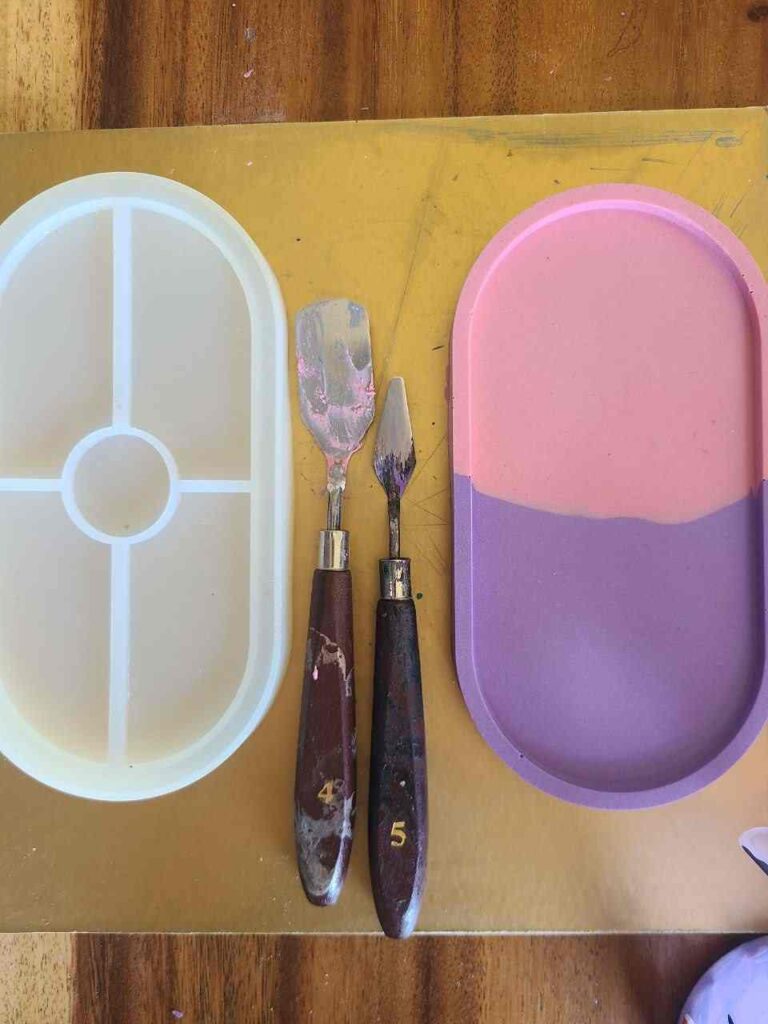
I have a quick and easy step-by-step tutorial here: How to Use Jesmonite: Easy Tray Making in 40 Minutes
Tips for molding with Jesmonite Or Alternatives
- Store jesmonite in a dry place no longer than 12 months.
- Do not add too much pigment into the mixture, as it will cause breaks.
- Do not leave crafts in the mold overnight – they will not dry or harden.
- Always wash molds after using it with soapy water. No special product is required.
- Do not spill pigments, they are very strong and may be hard to wash off.
- Don’t throw dried leftovers from mixing cups. Break them and use later, premixing to the plaster to get terrazzo effect. It will give amazing effects.
- If you use powder pigments, remove the amount of plaster powder equal to the pigment volume, and then add pigment powder.
- Do not pour them down the drain. Most of the products contain micro plastic and will be bad for environment.
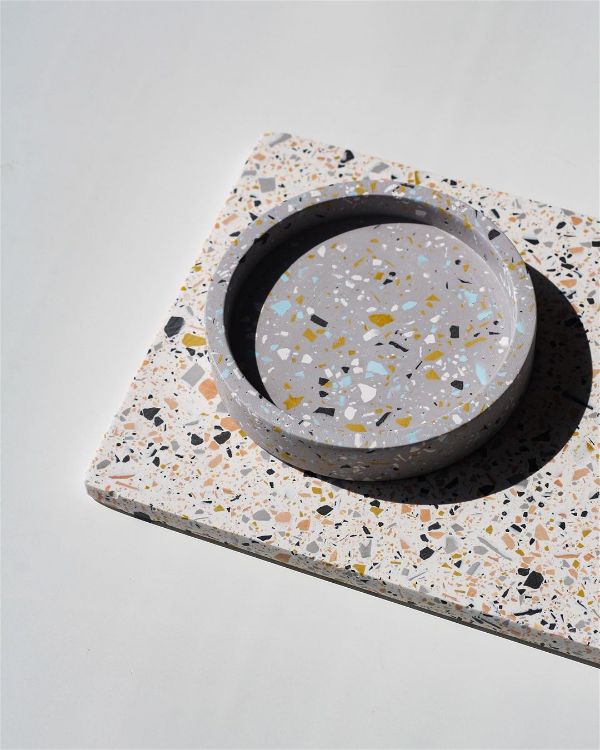
Jesmonite FAQ
What can I use instead of Jesmonite?
For fine crafts and interior design resin, plaster, or concrete are jesmonite alternatives. In construction, it can be replaced by polyester and fiberglass.
As close alternatives for jesmonite many crafters use Tiranti’s Plaster Polymer liquid together with a regular ‘alpha’ plaster such as Crystacal R or Basic Alpha or AquaResin. Check a quick list of the alternatives above.
Jesmonite products don’t have an official distributor in the USA.
What is Jesmonite made of?
Jesmonite is a type of concrete-like material that is made of 2 components: gypsum-based material – a mineral base- and an acrylic resin (water-based).
Jesmonites were first invented back in the 80s as a safer and lighter alternative to concrete and fiberglass.
What do you need for Jesmonite?
First, you need a jesmonite starter kit which includes molds, pigments, a jesmonite base, and an activator. In addition to these items, you’ll also need two plastic cups in order to mix your jesmonites before pouring them into the mold. And finally, you’ll also need some clippers for removing excess jesmonites after curing.
What is the difference between Jesmonite AC100 and AC300?
Jesmonite AC730 is water-based micro-concrete and it is close to glass-reinforced concrete, while Jesmonite AC100 is water-based gypsum and it’s more like glass reinforced plaster.
Is Jesmonite food safe?
Even if it is already 35 years since jesmonite was designed and successfully being used in diverse projects, the manufacturer still doesn’t recommend using jesmonite in contact with food.
Have you tried using Jesmonite or any of its alternatives? Which one you like best?
To be honest I love Jesmonite and I feel like it is one of the most beginner-friendly materials on the market but you can make so much with it!
Let me know your thoughts in comments:
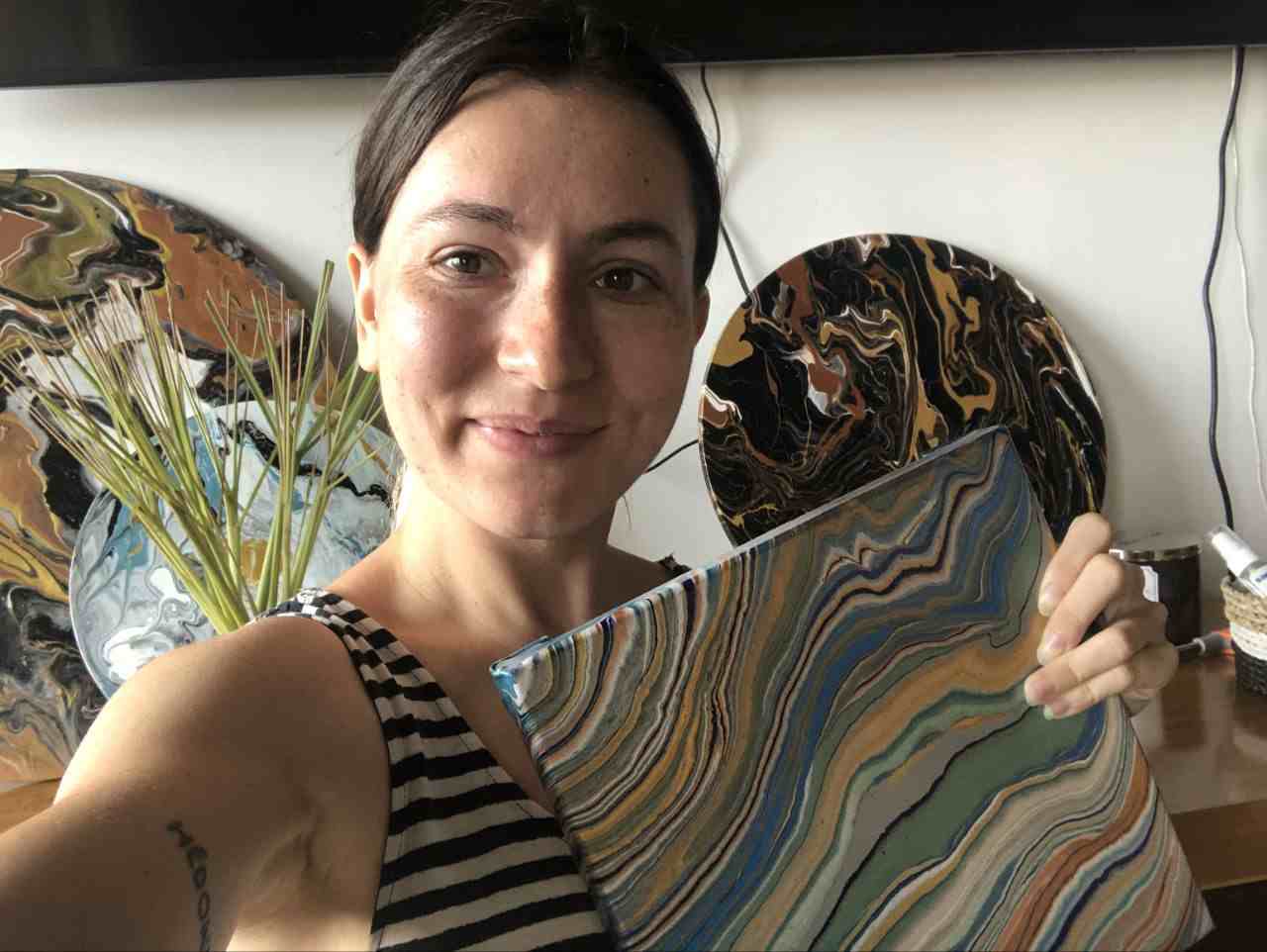
Masha Eretnova, born in 1991, is a Buenos Aires-based certified teacher, artist, and member of the Professional Artist Association with 20+ years of personal painting journey.
She started painting and drawing very early and is now an international abstract artist and educator passionate about acrylic painting, gouache, and crafts.
Her works are part of international exhibitions and contests, including ArtlyMix (Brazil), Al-Tiba 9 (Spain), Exhibizone (Canada), Italy, and many more.
Besides her artistic pursuits, Masha holds a post-grad diploma in Teaching Film Photography and 2 music school diplomas: piano and opera singing.
Last update on 2024-07-27 / Affiliate links / Images from Amazon Product Advertising API
